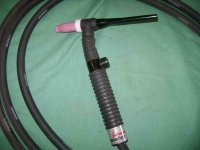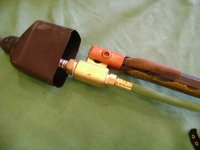You didn't say how much experience "you" have at fabrication thus far. If you post a couple example projects you have done it will be easier to guess what your level of experience is. And your project scale.
Sorry I can't guess what a $500 welder will do for you. I've never tried one. I have a Miller MIG that's rated for up to 10mm (on 220v) but some folks say I could have bought a better machine for a lot less $$$ than Miller. I'm curious but I just weld with what I have, which just might last me longer than I will be welding.
I see "duty cycle" mentioned often, but I have been welding for 40 years and have never had a welder shut off mid-weld. I don't weld all day. My day consists of cut, grind, fit, sit, weld a bit, and repeat. The welders I have used in the past 20 years have duty cycles of "20%" or perhaps less. The only observation I can offer is that "duty-cycle" has never come to mind beyond reading warning posts on the internet. And certainly not "in-use". If I have a longer weld to do that a pro wants to do in 8 minutes; it probably takes me 16 minutes anyway, which stands to reason my machine gets time to rest.
Be sure that the "consumables" for that brand are available for the next 20 years.
That looks like a good way to tie up a ferocious 9" angle grinder. Do you have a 2nd grinder (maybe 4 1/2") too? I'd say thats an OK $59 spent if you already have 2 grinders.
Only point I can make is that it's not a MIG! Although TIG and plasma cutting are interesting. I would say that if you're buying tools and already have a stick welder, do yourself a favor and add a MIG.
As far as experience I have only been welding for about 2 years max this might be caused by the fact that I am only 14 consequently I greatly appreciate everyone's input seeing as I'm only young. I built a 3x1.5m chicken tractor and a shed a similar size.
I agree about duty cycle by the time I grind setup and weld I don't think duty cycle will be a problem, one of the welders I am looking at has a 35% duty cycle.
Talking about consumables, I gather you can use rods from my stick welder in an inverter? Another thing is the price of rods compared to MIG wire a fair comparison.
Yes, I have a 9" grinder and a littler grinder I don't know of the top of my head what size it is 4.5in or 5in.
I think basically that plasma,inverter,tig machine is a piece of Chinese junk now.
I like the idea of a MIG but if the MIG I buy is a cheap Chinese one, and for the same money I can get a high quality inverter.
Would you suggest gas or gasless MIG I understand that a gasless MIG still produces slag so how is that better than an inverter?
I don't actually care if I get a MIG or an inverter as long as I can easily make high quality welds.
The inverter I am currently interested in is this one Everlast Welders PowerARC 140ST
Or this MIG RXT150P - Buy Welder Mig 150amp Gas/Gasless 10 Amp Plug - MIG Welders - WELDING | Gasweld
What do you use to remove slag? What do you think of these for that purpose: 530071 - Buy Brush Cup 1Row 3" Xm14X2.0 | Gasweld 534392 - Buy Air Hammer & Needle Scaler | Gasweld 534324 - Buy Air Hammer Chisel 6Pc Kit Case | Gasweld
We are on 240V here (not something really to be messed with).
Thanks so much for all your help so far,
ferrari99




